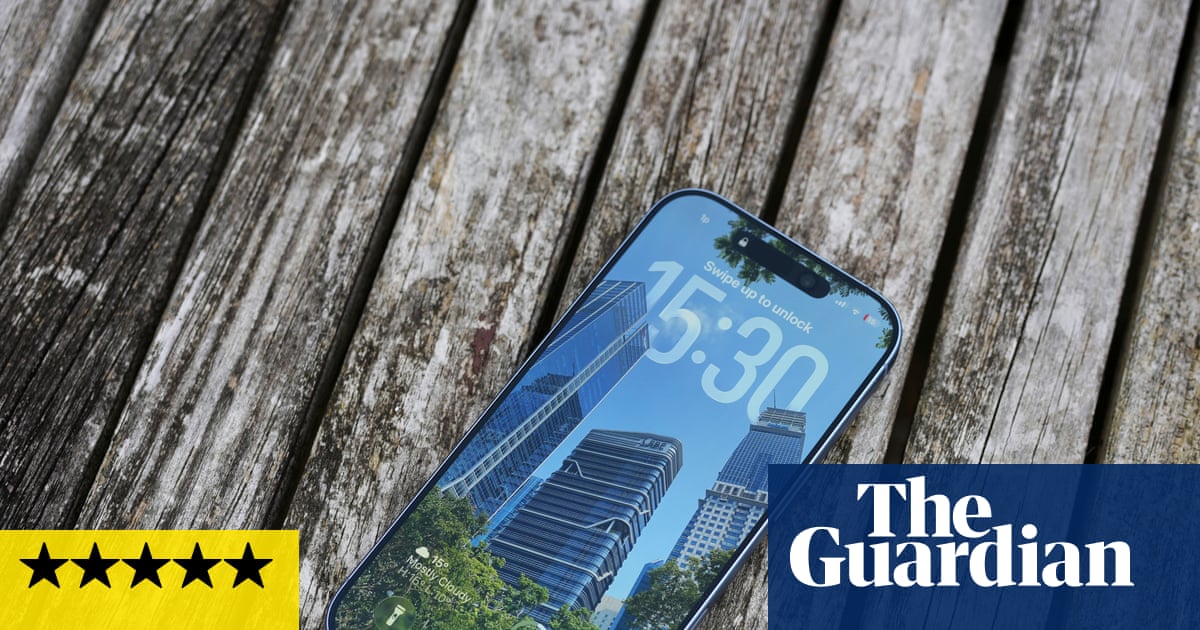#iphone-17
#iphone-17
[ follow ]
#apple #iphone-air #china-smartphone-market #china-market #market-share #phone-cases #magsafe #camera-upgrades
fromFast Company
1 week agoiPhone 17 resellers are seeing 'bulk quantities' traded in
New data from B-Stock, a B2B marketplace for wholesale liquidation of returned and overstock inventory, finds that large cellular carriers are already moving "bulk quantities" of iPhone 17s through the resale channels for B2B customers. One sale on the site currently offers 111 iPhone 17 Pro Max units (with bidding for the lot standing at $80,200 as of Wednesday afternoon). All totaled, there were more than 300 iPhone 17 devices up for resale on the site as of Wednesday.
Apple
fromDesign Milk
1 week agoNative Union Cases the New iPhone 17 With Myriad Accessories
Recently, Apple launched the iPhone 17 as a marked improvement from the previous edition. Not only does it come in a wider range of variants with varying degrees of updated technology - the cameras in particular - it also signals the return of trend-conscious colorways: silver, cosmic orange, lavender, sage, mist blue, white, and standard black. (Fun fact: This article was written on an iPhone 17 Pro Max in deep blue).
Apple
fromZDNET
3 weeks agoI charged my iPhone the 'Apple way' for 2 years - here's how the battery fares now
When I got my iPhone 15 Pro Max in September 2023, I decided that I'd do everything I could to make the battery last. Well, an accident destroyed that handset, so I restarted the experiment in March 2024. CNET: iPhone Battery Showdown: 3 Years of Data Show How the iPhone 17 Models Measure Up I wanted to see just how much lifespan I could get out of the battery.
Apple
fromThe Verge
3 weeks agoApple's custom Wi-Fi chip gives the iPhone 17 a notable boost, according to speed tests
Ookla has found that Apple's custom N1 networking chip that integrates the Wi-Fi 7, Bluetooth 6, and Thread radios in the iPhone 17 family " delivers a clear step-change in real-world Wi-Fi performance " when compared to the Broadcom chip used in the iPhone 16 models. In North America, the iPhone 17 family also outperformed flagship Android phones when it came to Wi-Fi download speeds during the same time period.
Apple
fromGSMArena.com
1 month agoeSIM-only iPhone 17 Pro flexes muscle in our battery life tests
Apple did something different with this year's iPhone 17 series, and it's not just the bold redesign or Cosmic Orange colorway. The eSIM-only variants of the 17 Pro and 17 Pro Max got larger batteries compared to the models with the physical Nano SIM tray. This marks the first time Apple is selling the same device with different battery capacities depending on the region.
Apple
Apple
fromBusiness Matters
1 month agoFrom iPhone 17 to computing power wealth: CryptoMiningFirm cloud mining allows users to earn $8,150 per day!
Cryptominingfirm leverages AI-driven cloud mining and iPhone 17 computing power to deliver multi-chain cryptocurrency earnings and substantial daily returns.
fromZDNET
2 months agoI've used every iPhone 17 model, and my yearly buying advice is changing in 2025
The idea of " tyranny of choice" says that having a set of good choices is supposed to let everyone find exactly what makes them most happy, but the reality is that having so many good choices can often lead to anxiety, indecisiveness, and discontent. If we apply this concept to the iPhone 17 lineup, then Apple is quite the tyrant this year.
Apple
fromGadget Review
2 months agoHow T-Mobile Unlocks the Full Power of the iPhone 17 with T-Satellite
The iPhone 17 is Apple's most advanced phone yet, delivering blistering speed with the new A19 chip, a ProMotion Super Retina XDR display that makes every scroll feel fluid, and a camera system designed to rival pro gear. But power is only as good as the signal behind it, and that's where most carriers hit a wall. What sets the iPhone 17 apart on T-Mobile is T-Satellite with Starlink, which gives you an extra layer of coverage where no carrier towers can reach.
Apple
fromGSMArena.com
2 months agoTop 10 trending phones of week 40
The 17 domination continued in week 40, Xiaomi and Apple's latest flagships remaining as the most popular phones in our database. The Xiaomi 17 Pro Max retained its crown, joined by its 17 Pro sibling and the iPhone 17 Pro Max on the rostrum. Apple iPhone 17 Pro Max The 15T Pro and the vanilla 17 make it four Xiaomi phones in the top 5 - quite the achievement for the Chinese maker.
Mobile UX
fromMail Online
2 months agoHere's what you need to make your current iPhone feel like new
If you either agree with this sentiment or just don't have the funds to upgrade to the new device, there are a few things you can do to make your current phone feel and look like new again. Not sure where to start? We're here to help with four tested and reviewed products that will instantly give your device a facelift - and the most affordable pick costs just $9.
Apple
fromGSMArena.com
2 months agoApple iPhone 17 review
The iPhone 17 is the next installment in Apple's mainstream lineup and with its Plus sibling replaced with an Air model this year, it sounds like the dud in the lineup with its plain naming. Except that's an entirely false impression and this may well be the most improved member of the 2025 Apple series. This year's refresh brings a number of meaningful upgrades over the iPhone 16.
Mobile UX
fromGSMArena.com
2 months agoiPhone 17 aces durability test
Apple is currently going through "scratchgate" with its iPhone 17 Pro series but how does the regular iPhone 17 fare? Well, much better thanks to its back glass, which is etched in a soft-touch material. YouTuber JerryRigEverything exposed the iPhone 17 to his signature durability test and tried his best to scratch the device with all sorts of minerals. With no sharp anodized aluminum edges on the camera island, the iPhone 17 is much less susceptible to scratches.
Mobile UX
fromZDNET
2 months agoHow I'm protecting my iPhone 17 Pro Max from 'scratchgate' - despite what Apple says
Specifically, there have been photos of iPhones in Apple Stores showing wear from MagSafe chargers, and owners posting photos of damage around the camera plateau. Apple has reached out to to respond to these concerns, saying the scratches around the MagSafe are not scratches but material transfer from the stand to the phone that can be removed with some cleaning, and that the durability of the camera plateau is no different from the anodized aluminum found on other Apple products.
Apple
fromZDNET
2 months agoWi-Fi cutting out on your iPhone 17? You're not alone - and a fix may still be weeks away
Some new owners of the iPhone 17, iPhone 17 Pro, iPhone 17 Pro Max, and iPhone Air alike are saying that the Wi-Fi briefly cuts out and then reconnects after the phone is unlocked, as reported on Monday by MacRumors. The issue has also been affecting CarPlay connections in vehicles that use a Wi-Fi connection. So far, affected iPhone 17 users have been chiming in on several different forums, including the Apple Support Community.
Apple
fromZDNET
2 months agoiPhone 17s are getting dinged up fast - how to protect yours from 'Scratchgate'
Another new iPhone rollout, another possible controversy. This time, the iPhone 17 is in the crosshairs as buyers and potential customers are complaining that the phones scratch too easily, even ones still on display in Apple stores. The reports started surfacing this past weekend after the new iPhone lineup officially appeared in stores last Friday. So far, people have noticed scuffs on the deep blue variants of the iPhone 17 Pro and Pro Max and scratches on the iPhone 17 Air Space Black edition,
Apple
fromZDNET
2 months agoI've tested every iPhone 17 model, and I'm recommending something different this time
The fact that Apple poured so many upgrades into the iPhone 17 was the surprise of the 2025 Apple Event for me. First of all, Apple finally did a major facelift to the iPhone 17's screen technology, kicking it up to 6.3-inches (from 6.1 last year) with thinner bezels, 120Hz ProMotion display, 3000 nits of peak brightness, an anti-reflective coating, and an always-on display.
Apple
fromBustle
2 months agoThe New iPhone 17's Camera Can Take Museum-Quality Photos
Funnily enough, before they were tapped for this project, Ryan says Inez & Vinoodh used to muse about how using a phone would be so much smoother than their traditional setup with heavy gear, lighting, and assistants. "You can just move more quickly and act on ideas as they're evolving," Ryan says. "The phone allows you to be a little bit reckless and take chances. You can shoot thousands of pictures and try things you might not have tried before."
Photography
fromThe Verge
2 months agoIt's new iPhone day, so grab some screen protectors for just $4.49
Happy iPhone Day! If you're picking up the new iPhone 17 or iPhone Air and want to avoid scratches or cracks on its front glass, we spotted a great deal on a two-pack of amFilm's OneTouch screen protectors over at Slickdeals. Designed specifically to fit the front of the new 6.3-inch iPhone 17, you can buy a pack on sale starting at a new low price of just $4.49 ($7.50 off) when you apply the promo code EUZWG92J at checkout at Amazon.
Apple
Gadgets
fromYanko Design - Modern Industrial Design News
2 months agoThis $35 Screen Protector's Anti-Reflective Coating Can Actually Save Your iPhone's Battery Life - Yanko Design
TORRAS OrigArmor is an anti-reflective, 3D full-coverage screen protector for iPhone 17 and 17 Pro offering high light transmittance and low reflectivity.
fromYanko Design - Modern Industrial Design News
2 months agoApple Says the iPhone 17 is Tough. This $27 Case is Tougher. - Yanko Design
The dust has barely settled on the iPhone 17 series launch, and the hype is palpable. Apple's keynote was a masterclass in engineering poetry, touting a forged reinforced chassis (made from specialized Aluminum alloy or Titanium depending on the Pro or Air models) and a next-generation Ceramic Shield display that supposedly laughs in the face of danger. In fact, Apple's presentation even showed the phones being swung through a barrage of keys, coins, debris, even glass, highlighting just how robust the devices are.
Apple
[ Load more ]




























